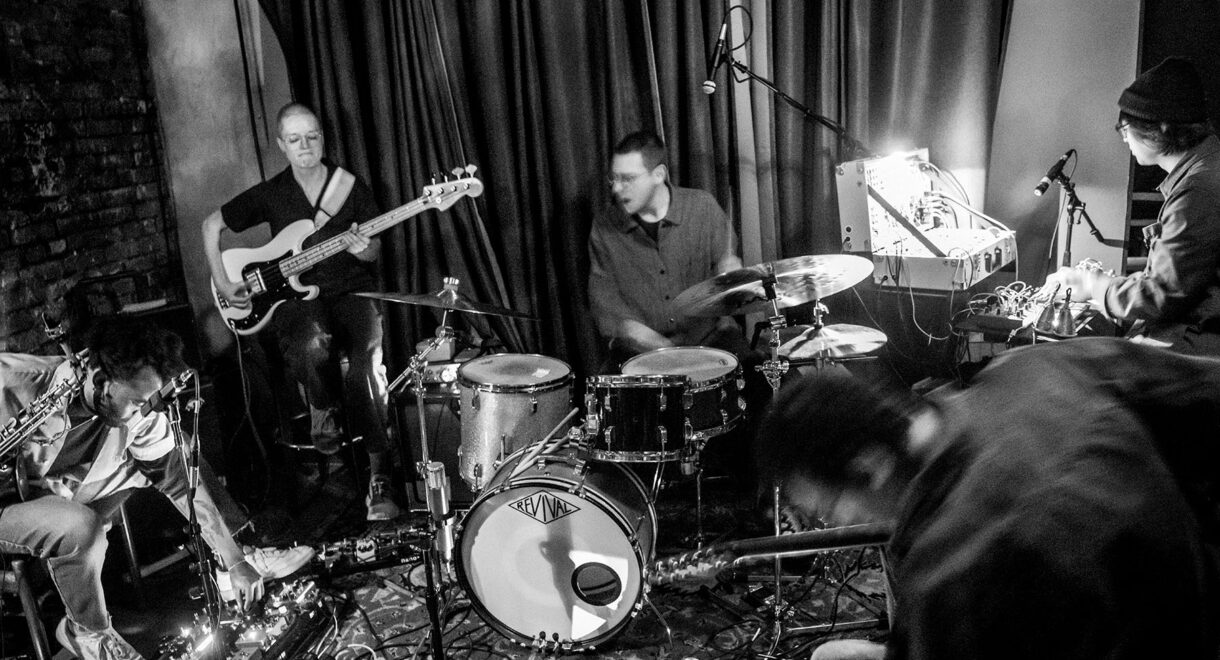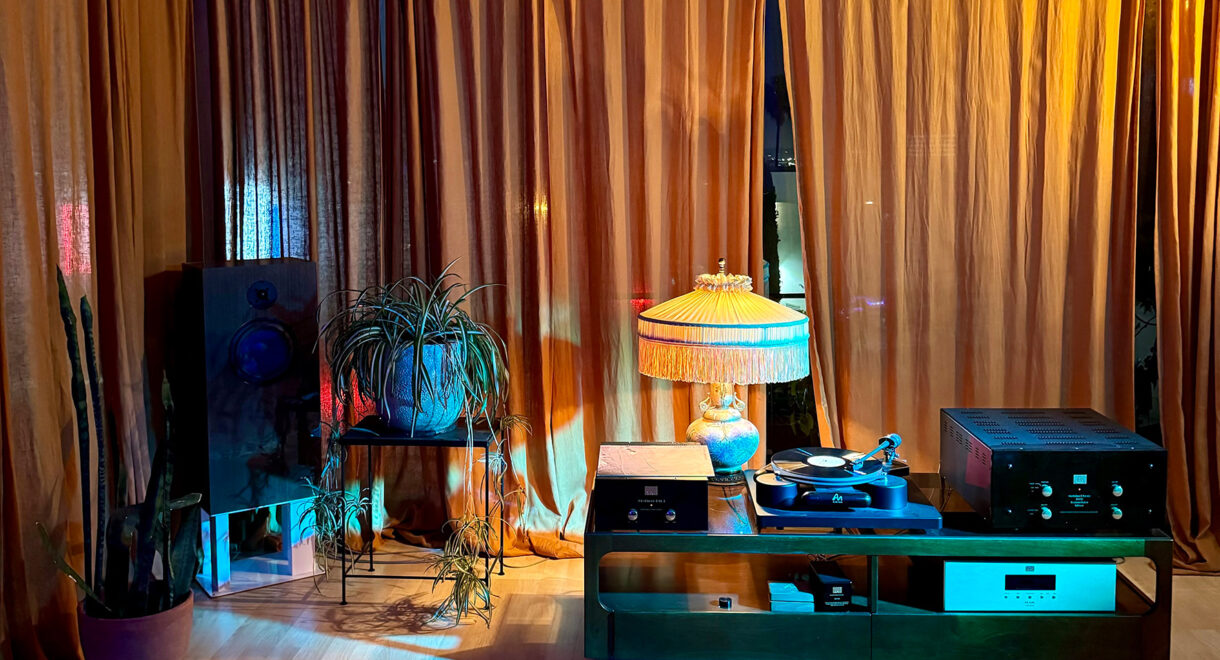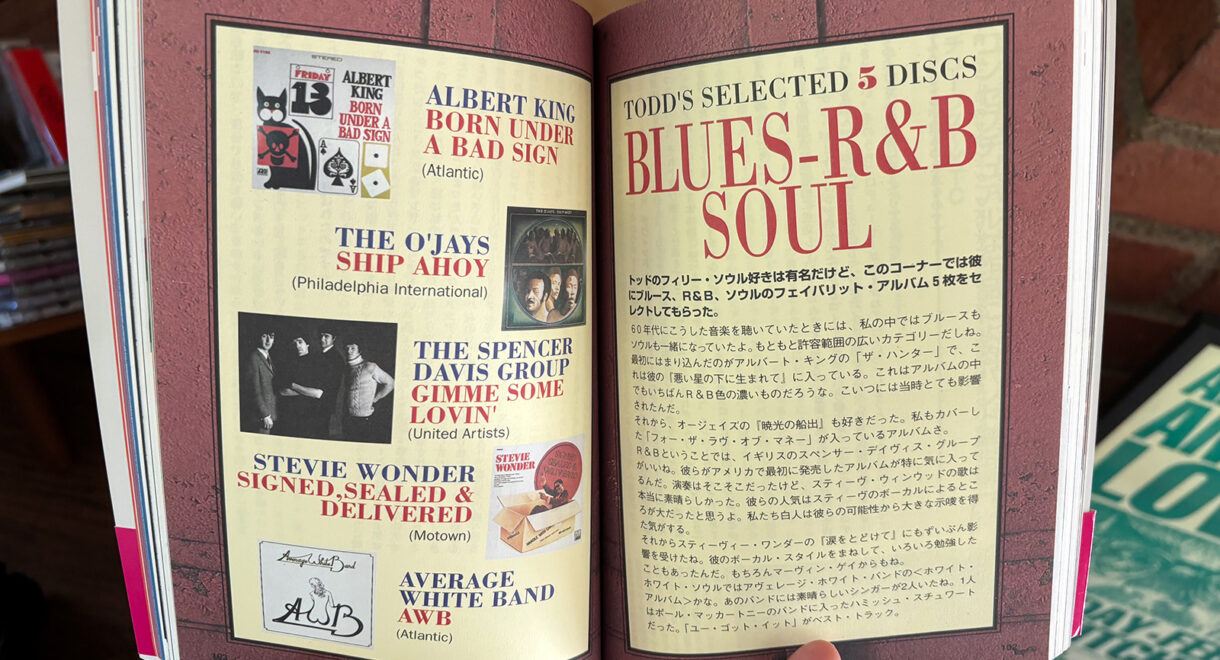In conversation with Small Medium Large, a new quintet from the burgeoning new West Coast jazz & improvised music scene. In 2018, LA-based jazz and post-rock guitarist Jeff […]
Speaking the universal language of music: An interview with Azar Lawrence

Ally O’Neil chats with jazz legend Azar Lawrence.
Los Angeles saxophone player Azar Lawrence is known for his work with McCoy Tyner and Miles Davis, but that just scratches the surface. He began his musical journey playing the violin at just five years old, but transitioned into saxophone by 13 and never put it down. Starting at Dorsey High School Jazz Workshop, while being taught and mentored by songwriter / screenwriter Herbert Baker.
Lawrence played his first professional gigs as a teen abroad with trumpeter Clark Terry and blues legend Muddy Waters. Following high school graduation, the musician joined Horace Tapscott’s Pan Afrikan Arkestra and regularly collaborated with George Cables, Candy Finch, Larry Gales, and Woody Shaw at a nearby venue called L.B. West on 54th St. in South LA. He performed in Ike & Tina Turner’s band, Charles Wright & the Watts 103rd Street Rhythm Band, and War. Before he hit 20, Lawrence commenced an extraordinary three-and-a-half year journey alongside Elvin Jones, the acclaimed drummer from John Coltrane’s quartet. Lawrence became a member of McCoy Tyner’s band for five-plus years, playing on some of Tyner’s best albums.
Along the way, Lawrence recorded and wrote music for Roberta Flack, Phyllis Hyman, Freddie Hubbard, and Busta Rhymes. He contributed to Earth Wind & Fire’s immensely praised platinum album, Powerlight, as well as Marvin Gaye’s searing divorce album Here, My Dear. The saxophonist continues to make phenomenal music with the Azar Lawrence Experience, which consists of Lynne Fiddmont on vocals, guitarist Dale Williams, Chris Lowery on trumpet, Wes Lowery on drums, Robert Turner on keys, and Munyungo Jackson and David Leach on percussion.
His three 1970s solo albums for the iconic jazz label Prestige are classics of the era.
Bridge Into The New Age (1974)
The album features a stellar lineup of musicians who bring immense talent and creativity to the recording. Joining Lawrence are maestros Woody Shaw on trumpet, Julian Priester on trombone, bassist Clint Houston, pianist Joe Bonner, drummer Billy Hart, James Mtume with the percussion and Jean Carn on vocals. Each musician’s distinct style and improvisational prowess contribute to the album’s overall brilliance. Opening track “Bridge Into The New Age” gets you prepared for the spiritual odyssey Lawrence guides you towards, one with minimal yet powerfully evocative lyrics that showcase vocalist Carn’s range and creativity. With its rich compositions, masterful performances, and exploratory spirit, Bridge Into The New Age remains a significant contribution to the spiritual jazz genre.
Summer Solstice (1975)
Lawrence drew inspiration from the earth’s longest day in midsummer when naming the album, whichexplores spirituality and exudes a sense of passion, energy, and spiritual depth, drawing inspiration from cosmic and celestial themes. The composer demonstrates his ability to effortlessly blend varied musical influences. Latin jazz, fusion, and post-bop seamlessly intertwine to create harmony. “From The Point Of Light” showcases how his tone can be warm yet expressive, transporting you to a meditative state.
People Moving (1976)
People Moving is the third of three albums put out through Prestige. The 1976 masterpiece, dedicated to the great Charles Stepney and produced by Skip Scarborough, features some of LA’s best session musicians: Patrice Rushen on electric piano and vocals, Harvey Mason on drums, Jerry Peters on piano, and James Mtume yet again on percussion. The title track, “People Moving,” accomplishes precisely what its name suggests – it gets the audience on their feet and grooving to the music. This album is extra remarkable; Lawrence’s first jazz-funk fusion release showcases his ability to excel in any genre. Two tracks are originally by Earth, Wind & Fire –– “Can’t Hide Love” and “Gratitude” –– but Lawrence makes them his own, breathing new life while honoring the original essence of the songs.
Lawrence recently spoke with In Sheep’s Clothing’s Ally O’Neil to talk about his life in music.
Azar, thank you so much for taking the time to chat. As a jazz musician who has had a successful and varied career, what do you feel has been the key to your longevity in the music industry?
Practice practice practice. From the fundamental musical delivery part of it, practicing and delivering a pleasant tone that the people like to hear. My saxophone teacher said long tones are the key, because you could know each and every note on the saxophone, but if they don’t sound good, who’s gonna listen? I remember him saying that and having a good attitude about yourself. Nobody wants to talk to somebody that ain’t nice. You have to know how to deal with people.
Who was your teacher?
Mr. Shoemaker. He’s been gone a long time, though. He used to drive over, come to me and teach me. Going back to that one thing he told me, you could know every note on the saxophone and be able to play each and every one but if it doesn’t sound good who’s gonna listen to them, I was like, “Oh yeah, that makes sense.”
You have played with some of the most legendary musicians in jazz history, including Miles Davis and McCoy Tyner. What are the most valuable lessons you've learned from these experiences and how have they influenced your own approach to music?
Each one of those individuals gave me a part of the puzzle that has become my life. Musically as well, music is a language and McCoy Tyner used to speak of that all the time. That was his thing, the language of music. Everywhere we went people spoke different languages, but they all understood the music. The universal language of music.
Each person I performed with gave me something I was able to take with me and build upon it to be the person, the musical entity that I am. The whole thing is to learn, it helps you to understand yourself –– understanding music and how to connect with your inner self, unlock those doors, and be able to speak using the universal language of music. That is an art one must study, and it is also a gift. The inner and outer connection of the musical instrument –– the physical aspect of the musical instrument, and how you utilize that to speak in a language that people can feel and understand –– is a lifelong study.
Your music often conveys deep emotions and spiritual themes. Can you share more about your personal connection to spirituality and how it influences your music?
Just since I was raised in the Catholic church but then grew into more of a universal connection with the higher self, the inner knowledge of metaphysics. I tried to scratch deeper on the surface to find the inner meanings of things. Everything has an inner meaning. The things we’re fed and taught are basically the outer shell of what is. A lot of things have been hidden over the centuries. There is the involution and the evolution of the spirit where the angels fell to earth. The spiritual energies became more deeply involved with matter; it was necessary for the seed of the human being to be couched within the material world so that they could grow like a seed in soil. This is the earthy soil of matter.
Back in the days of Atlantis and Lemuria, when the angels were just falling and the vibrations of the earthly plain were higher, the knowledge was free and more available, and then became more materialistic. Those that were in charge of keeping the knowledge saw that they should begin to clothe it in a myth, and the myths have inner meaning. Like Hansel and Gretel, that whole idea of leaving a trail through the royal maze. We get to earth and get so caught up in earthly materialistic things, but if you start to research and look back over history or “HIStory,” you see that there’s a trail that leads back. Some call it “the golden thread,” but still it’s the story of Hansel and Gretel that left a trail so you could find your way back to yourself.
Life would be awfully boring without all the layers. The duty of one person is not the duty of the other. In the words of Vivekananda in the Karma Yoga book, each is great in its own place and the duty of one is not the duty of the other. That’s one of the goals: to start to master that within oneself. A lot of us determine what other people should do by our own understanding, but everybody’s at different levels and it all fits together as a puzzle in terms of life. That’s what makes the whole world go round.
How do you feel your new music represents your artistic growth and evolution as a musician?
As a musician who is attempting to be continuous. The titles, for instance. “New Sky” was recorded during the pandemic. There were so many people that showed new concepts that they gathered or were awakened to. It’s apparent that there’s hope; there’s a new sky of individual awareness that has come from being still. Having to be still, having to have the time to go within. A lot of people were not pleased with themselves because they were bored or didn’t have anything to do, but some of us took that time to actually do some work and connect with ourselves.
The basis of my musical journey has been beyond a physical approach to life, to start to bring some of the listeners along. Musically, it’s difficult to put your finger on how the music is reflecting it. Hopefully it is reflected in the music and the titles, “All In Love,” “New Sky,” “Revelations” on the New Sky album. My very first album was called Bridge Into The New Age and that was a chant: “I am black as the night from which the light of a new day descends, I am the past, present, and future anointed of God, I am what I am, I am the blended colors of life that light the bridge into the new age, I am the seed plant in the flower anointed of earth, I am that I am.”
That’s called the serapis meditation. When I was playing with McCoy we went on a yacht cruise out on the lake, Orrin Keepnews offered to sign me to Prestige, McCoy signed off on that. In his office out in Berkeley, California we were talking about our plan to do that chant. I wanted to run it by him just in case there was anything politically incorrect.
Once I got to “I am the blended colors of life that light the bridge into the new age,” he stopped me and said “Wait, that sounds like an album title!” So that’s how that came about. I studied with some individuals at the Aquarian Spiritual Center. The word gnostics means “to know,” the black gnostics, the word black is “wise.” They had the black gnostics studies, which is the curriculum that’s based upon the Egyptian Mystery Schools. I had the chance to delve into that. I was prepared to start my path unlocking certain secrets in oneself and hopefully inspire other individuals to scratch a little deeper on the surface. One of my albums is called The Seeker, but all of the different albums you look at have a message and musically we’re hopefully relaying a message that comes together and starts to unfold.
How does your new music differ from your previous works? Are there any specific musical elements or stylistic choices that you have incorporated into this project?
I’ve started using a definite rhythm pattern. All the rhythms come from Africa, so before I was concentrating more or less dissuading the traditional jazz idiom type of rhythms. As I’ve become more involved over the years and had experience with it and working with McCoy Tyner, one of the things I got from him was the African influence and rhythmic influences.
The work I did with McCoy, and his own work, most likely involved the rhythms of South Africa or South America, Brazilian-type rhythms. But all those are influenced from Africa. I was with McCoy five-and-a-half years, so that was a part of my training. You notice a lot of my influence in songs are based upon that, especially in the earlier part of my career. I’ve played in funk bands: I was in Horny Horns, Watts 103rd Street Rhythm Band, my group Chameleon. That’s become integrated into what I’m doing now. The emphasis now is more on the funk.
Your 1976 release People Moving showcases a fusion of jazz, funk, and other genres. What motivated you to explore this musical fusion, and how did you approach blending these different styles together?
I think McCoy Tyner had a lot to do with that because, like I was saying, we were doing an album of his called Atlantis. There was one particular song on there where he wasn’t satisfied with the beat that the drummer was using. Gaderamy Franco, not only my friend but a great percussionist, may he rest in peace, said “Oh let me try, let me try!” and put a Brazilian beat on it. When he sat down, he just played a funk beat. McCoy was like, “Yeah, that’s it!” That got me wondering, “Why am I holding back?” There was a lot of peer pressure back in those days to not play funk. Sonny Rollins did a funk album. I was a purest –– I went all the way in there. This man invented jazz, so when he did that funk album I was like, okay.
Miles broke through all of that; when I played with Miles in that period, he was doing what we’re trying to do now in this group –– fuse funk, but I’m a rock and roller too. I was around the rock group Boston –– Fran Sheehan the bass player, Barry Goudreau, Sibby Hashian. We were doing some albums on the side. We used to do a history of rock and roll once a year at the Swampscott High School where Barry Goudreau and Fran went to school, Swampscott, Massachusetts. Guys from the Stones, Foghat, Paul Shaffer from David Letterman. We played up in Swampscott and it was two hours nonstop. We’d go down to the China Club in New York the next day and do it again. I’ve worked with Eric Burdon, from The Animals. When he [joined] War, I was in the group before. I went on the road with Elvin Jones for a while too, that was fun.
What's your secret to crafting mesmerizing live performances? Can you share the behind-the-scenes magic that goes into your preparation for a show and how you consistently deliver such captivating and dynamic performances?
I think you hit it on the head… It’s preparation. Like today, we’re at rehearsal. It’s a meticulous repetitious type of approach. You start to approach perfection of some type. Then when it gets to a certain level of perfection, if there’s such a thing, then at that point it starts to blossom when you perform it. Other energies become involved, stimuli get involved when the moment arises. With the interaction of the audience and all those kinds of things, that happens when you perform live.
Revisit our collection writeup on Azar Lawrence’s cult synth boogie record Shadow Dancing: https://insheepsclothinghifi.com/album/azar-lawrence-shadow-dancing/










